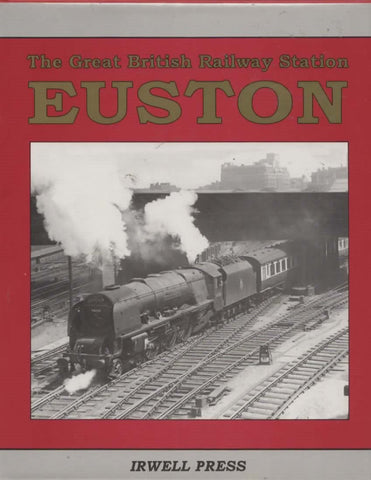The Great British Railway Station: Euston (IR287)
Product No.: IR287
Title: The Great British Railway Station: Euston
Author(s): Ellaway, K.J.
Illustrator(s): N/A
Publisher: Irwell Press
ISBN: 91871608287
Condition: New
Binding: Hardcover
Dust Jacket: New
Edition: 1st Edition
Publication Year: 1994
Features: 92 Pages with Black/White Photos.
The original station was opened on 20 July 1837, as the terminus of the London and Birmingham Railway constructed by William Cubitt. It was designed by a well-known classically trained architect, Philip Hardwick with a 200-ft (61 m) long train shed by structural engineer Charles Fox. Initially it had only two platforms, one for departures and one for arrivals. Also designed by Hardwick was a 72 ft (22 m) high Doric propylaeum, the largest ever built, which was erected at the station's entrance to serve as a portico and became renowned as the Euston Arch.
Stephenson's original plan was to route the railway through north London so that it terminated where King's Cross station currently stands, but after encountering severe opposition from landowners, he was forced to build the railway through Tring, Watford and Harrow, terminating at its present site at Euston. Until 1844, trains were pulled up the incline to Camden Town by cables because the London and Birmingham Railway's Act of Parliament prohibited the use of locomotives in the Euston area; this prohibition is said to have been at the request of Lord Southampton, who owned land bordering this section of the line.
The station grew rapidly over the following years as traffic increased. It was greatly expanded in the 1840s, with the opening in 1849 of the spectacular Great Hall (designed by Hardwick's son, Philip Charles Hardwick), built in classical style. It was 126 ft (38 m) long, 61 ft (19 m) wide and 64 ft (20 m) high, with a coffered ceiling and a sweeping double flight of stairs leading to offices at the northern end of the hall. Architectural sculptor John Thomas contributed eight allegorical statues representing the cities served by the line : London, Liverpool, Manchester, etc.
The station was further from Euston Road than the front of the modern complex; it was on Drummond Street, which now terminates at the side of the station, but then ran all the way across the front of it. A short road called Euston Grove ran from Euston Square towards the arch. Two hotels, the Euston Hotel and the Victoria Hotel, flanked the northern half of this approach.
Apart from the lodges on Euston Road and statues now on the forecourt, few relics of the old station survive. The National Railway Museum's collection at York includes a commemorative plaque and E.H. Bailey's statue of George Stephenson, both from the Great Hall, the entrance gates and an 1846 LNWR turntable discovered during demolition.



